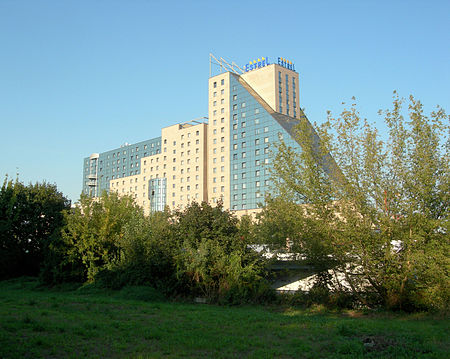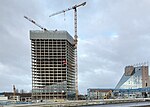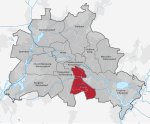Estrel Hotel
1994 establishments in GermanyHotel buildings completed in 1994Hotels established in 1994Hotels in Berlin

The Estrel Berlin in Berlin is Europe’s largest convention, entertainment, and hotel complex, and with its 1,125 rooms the largest hotel in Germany. With a total turnover of 100.8 million DM (Deutsche Mark) in the year 2000, the Estrel became the hotel with the highest turnover in Germany, a status which it retained. In 2009 it had a turnover of 50.45 million Euros. The Estrel employs a total of 450 people including trainees, in addition another 150 employees from outside companies and about 100 part-time employees.
Excerpt from the Wikipedia article Estrel Hotel (License: CC BY-SA 3.0, Authors, Images).Estrel Hotel
Foyer, Berlin Neukölln
Geographical coordinates (GPS) Address Nearby Places Show on map
Geographical coordinates (GPS)
| Latitude | Longitude |
|---|---|
| N 52.474166666667 ° | E 13.459444444444 ° |
Address
Flügel 3 (Estrel)
Foyer
12057 Berlin, Neukölln
Germany
Open on Google Maps











